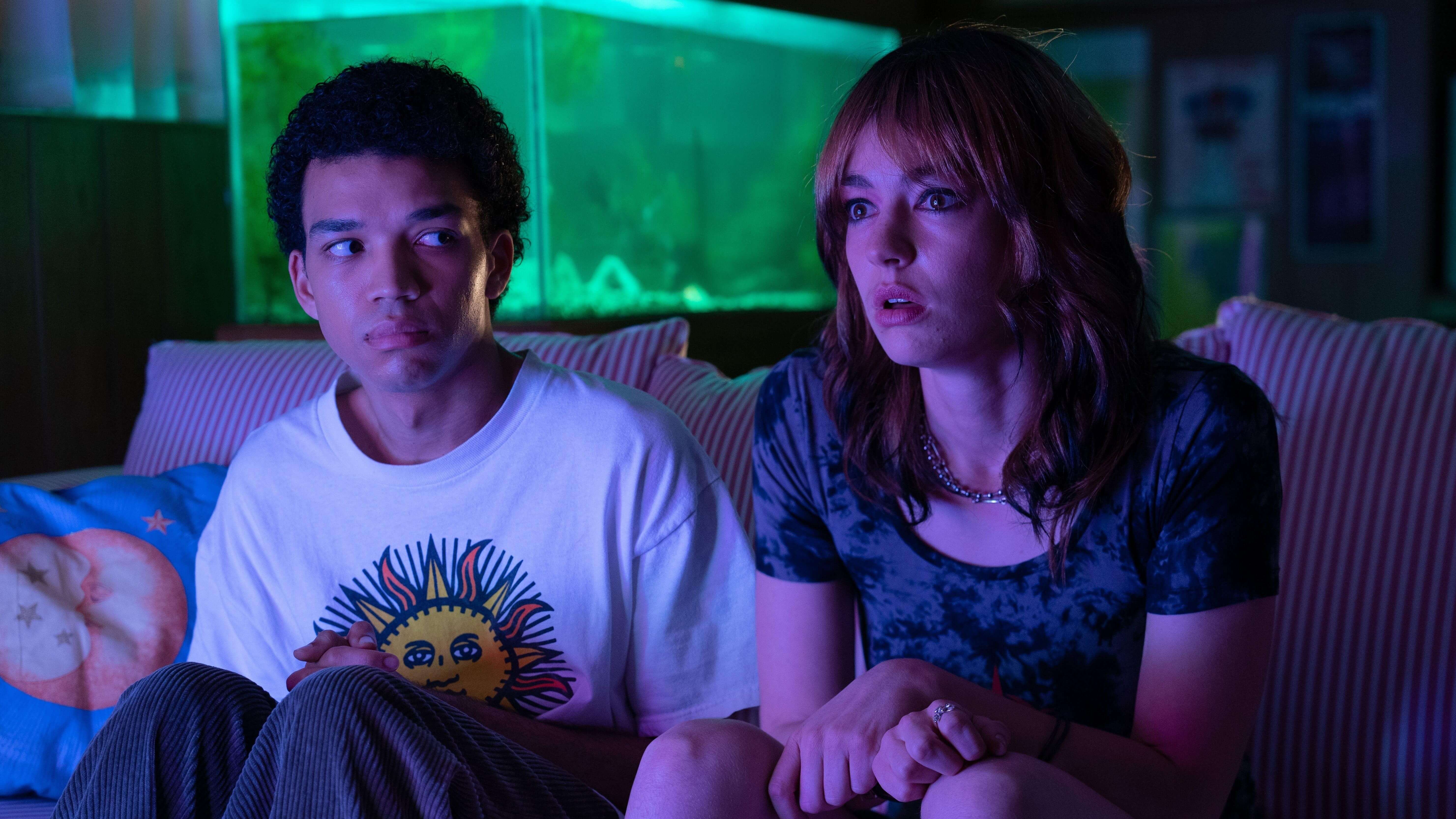I Saw The TV Glow review: Jane Schoenbrun's electric film reaches through the screen and never lets go
A dark tale of pop-culture obsession and self-discovery from the filmmaker who brought us We’re All Going To The World’s Fair

This review was originally published on March 11, 2024, as part of our coverage of the 2024 South By Southwest film festival.
You will never be as obsessed with anything as an adult the way you were in your teenage years. We’ve all been down that path, crawling down the rabbit hole of a band, a book series, a movie, a video game, until we can’t go any deeper, then huddling there in the enveloping darkness waiting for the light of something else to pull us up and out again. It can be a transformative experience, but stay down in that hole too long and reality starts to bend around that hiding place, until you lose all sense of the way out.
With their previous feature, the excellent We’re All Going To The World’s Fair, writer-director Jane Schoenbrun charted that kind of obsession in the form of an obscure internet game with potentially dangerous consequences. This time, Schoenbrun gets more personal, and more primally haunting. I Saw The TV Glow is a remarkable portrait of pop-culture obsession—how it can unite us, change us, and ripple down through our entire lives in ways both uplifting and unsettling.
The particular pop-culture obsession dominating I Saw The TV Glow is The Pink Opaque, a supernatural teen drama that airs late on Saturday nights. It follows two best friends united across a long distance by a psychic connection, which helps them battle all manner of monsters. Owen (played by Ian Foreman as a pre-teen and Justice Smith as a high-schooler) is a lonely kid who’s caught glimpses of the show while channel surfing, and is intrigued enough to approach superfan Maddy (Brigette Lundy-Paine) about The Pink Opaque’s true nature. Taken with his eagerness, she invites him over to watch the show one night, beginning a decade-long odyssey that’s perhaps not quite a friendship, but far more than an acquaintance. As Owen and Maddy descend deeper into the show’s fandom, one of them starts to suspect that the show is more than just a half-hour of fiction presented every Saturday night.
Schoenbrun has many gifts as a filmmaker, but one of their most prominent is the ability to enchant even the most mundane of landscapes through lighting, pacing, and sound. The high school Owen and Maddy attend feels like a tiled purgatory, complete with foreboding phrases on the walls and fluorescent light that never seems to reach all the way to the corners of any given space. The streets of their neighborhood are dark voids punctuated by lights which illuminate only the important things in their lives, the things that bring in color—from a strange ice cream truck to neon-chalked sidewalk drawings. The film’s visuals conjure the sense that we’re watching two people adrift in a sea of boring, faded reality, sailing this way and that in search of the connective tissue that will lend meaning to their lives, whether that’s a TV show or a moment of sincerity between the two of them.
But of course, the real meat of I Saw The TV Glow comes as Schoenbrun dials into the transformative nature of their characters’ obsession, which might bring about a metamorphosis or might just be triggering dangerous, numbing dissociative episodes. For both Owen and Maddy, the journey toward trying to figure out what’s real and what’s simply a product of their obsession is a complex one, and the audience might not always be able to follow them down their respective roads. If you’re willing to lean into the film, and follow Schoenbrun’s tone-poem instincts, you’ll find something magical. They’ve charted a narrative that’s simultaneously a tale of a piece of media changing someone’s life and a tale of someone taking the long way ’round to who they really are.
That magic extends to the young cast, led by Smith and Lundy-Paine as two lost people searching for some kind of truth, even if they have to look deep in the bowels of fiction to find it. Their performances are dual engines of unsettling emotion, as hypnotic as the flickering static on a dying TV screen, and they manage the particular tone of Schoenbrun’s script perfectly, placing the viewer in a world that’s not quite our own and yet, especially if you grew up in the ’90s, so real you can almost reach through the screen and touch it.
It won’t be for everyone, but for those that get it, I Saw The TV Glow is proof of Schoenbrun’s place as one of the most exciting, singular voices in horror and genre cinema right now. It’s a triumph of a very particular kind of beautiful darkness, inviting you, much like its characters, to get happily lost in its images.